The Importance and integration of balance exercises
The importance of balance exercises in strength lies in improving and maintaining neuromuscular traits that contribute to strength gain yet are often not optimized by strength training. As such, balance integration should engage neuromuscular components in a way that's enhancing to strength. Such engagement should involve neuromuscular recruitment and tension sufficient to stimulate enhanced function.
Unlike the circus acts portrayed as balance exercises, functional balance is best challenged with modified strength training movements. In addition to efficiency, integrating balance challenge into strength exercises often results in greater tension and recruitment of all involved muscles. Modification of squatting, pulling, and pushing movements will enhance the strength of both the balance and movement muscles involved in the exercise.
Integrating balance into squatting exercises
Increasing the strength of squatting movements that challenge balance will forge balance that can be honed for nearly any activity. The easiest ways to challenge balance with squatting movements is by adjusting the base-of-support. Using one leg, transferring weight, and splitting stance all adjust support-base to challenge balance. The following exercises are good examples of squatting exercises that forge functional balance.
Split squats
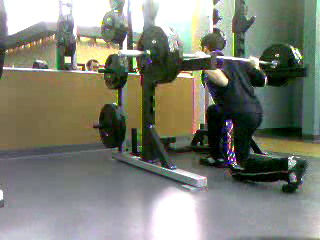 |
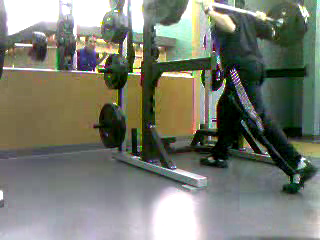 |
Split squats shrink and transfer base from positions you're most often in when balance is challenged. In addition the demands this exercise places on the hips and thighs, the abdominal core is also engaged. The frontal plane challenge presented demands intense engagement of the abs, obliques, and spinal erectors. Forging ruggedness in these positions will contribute to athletic versatility.
1 leg box-squat
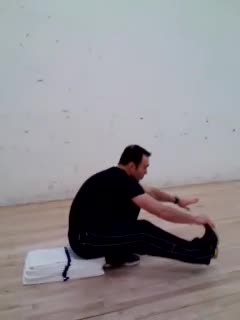 |
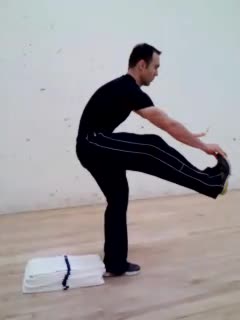 |
This is one of the balance exercises that alters base by both shrinking and transferring it. When seated, your base of support is your hips/butt planted on the box. To stand you must transfer and shrink the base to that of the standing foot. Such a change in base demands great tension of all the movement and balance muscles involved under sufficient loads.
Integrating balance challenge into pulling/pushing
Though most think of the surfaces you walk on as being the only threat to balance, uneven forces acting on the upper body can be very threatening to balance. Being run into or bumping into something can knock the best of us on our asses. By applying lateral/rotational force to the body when strength training might safeguard against falling when being bumped/jarred.
Additionally, strength progression can be enhanced via the neural irradiation that occurs when balance is challenged. The following push/pulls are great examples exercises that forge both balance and strength
1arm overhead press seated on the floor
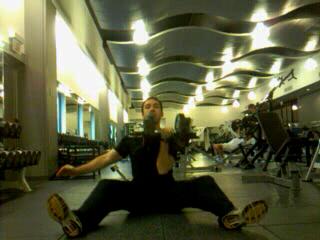 |
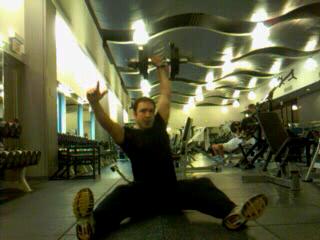 |
This exercise demands tremendous tension for balancing the torso in the upright position while still placing intense demand on the shoulders, triceps, and upper-back. In fact, the reduced ability to lean back with this shoulder press variation, demands even more deltoid tension because pectoral involvement is greatly reduced.
Cable press/pull
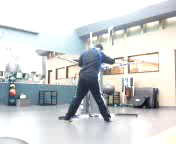 |
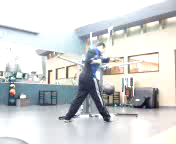 |
This exercise demands brute core, chest, shoulder, and triceps strength along with profound balance demand from your stance. Whether swinging a golf-club, bat, or racket or throwing a punch or kick, the increased force capacity and balance forged with this exercise will likely help!
1arm opposite leg DB row
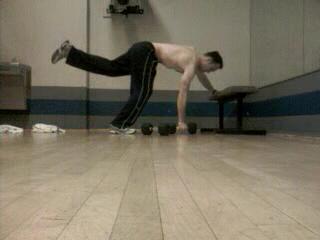 |
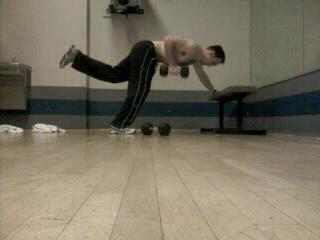 |
This exercise provokes the balance apparatus of the hips and core while sufficiently loading the rowing muscles.
1-arm supine row
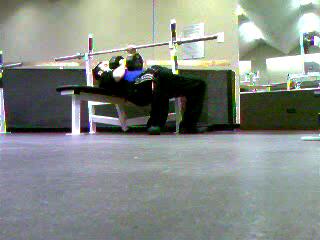 |
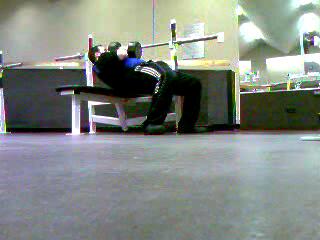 |
This exercise demands balance in the sense that one arm must lift the entire body in spite of the resistance of rotational and gravity forces. It’s not unusual for such demands to be encountered in life and/or athletic settings.
Conclusion
In summary, balance exercise is important to function as well as strength progression. Without the ability to utilize strength during situations of challenged balance, such strength is no different than horsepower without a transmission. Proper integration, however, of balance challenge into strength exercises can allow for the forging of strength with functional versatility.